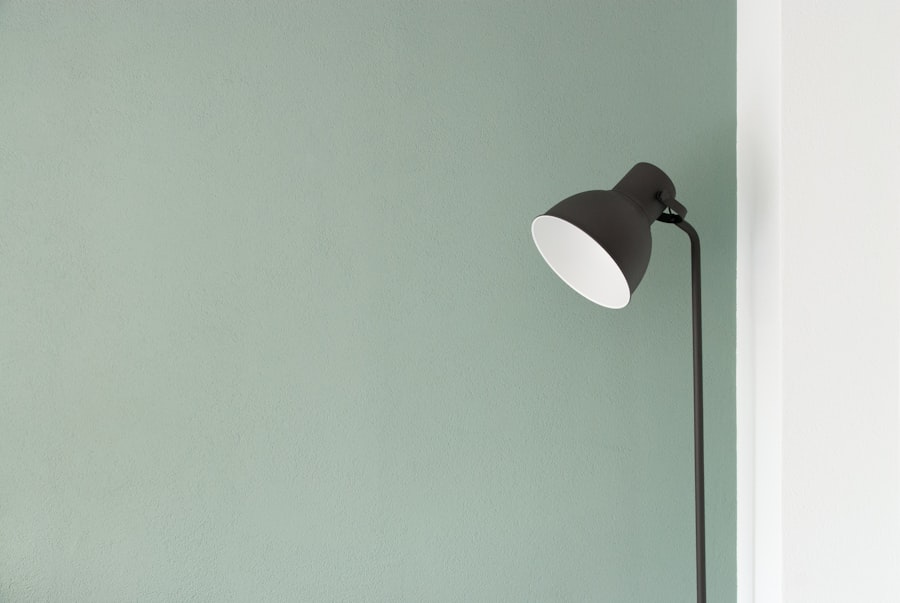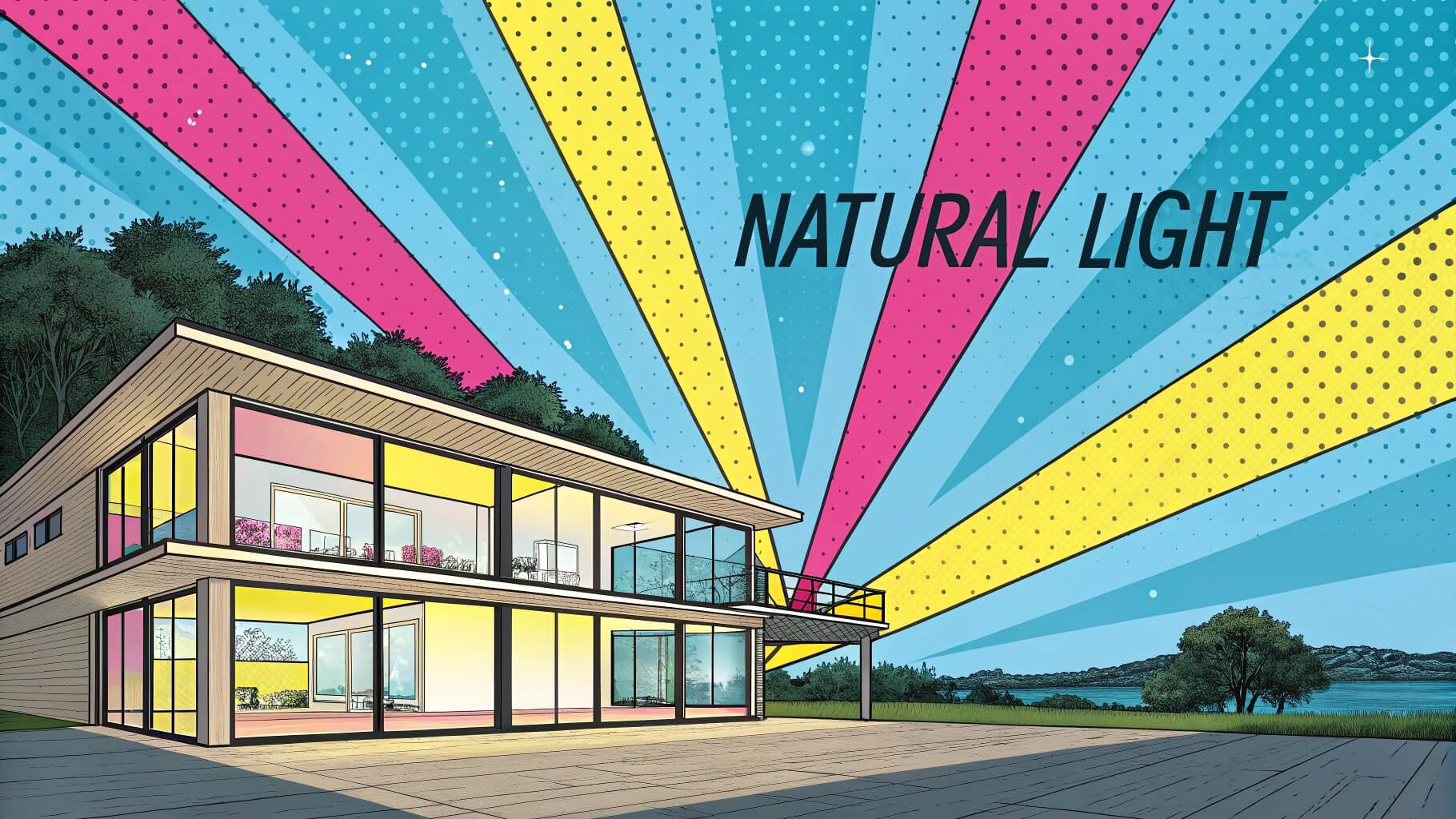Natural light has become a cornerstone of modern mansion architecture, serving not only aesthetic purposes but also enhancing the overall living experience. The integration of natural light into architectural design is not merely a trend; it reflects a deeper understanding of how light influences human behavior and well-being.
In contemporary mansions, expansive windows, skylights, and open floor plans are employed to flood interiors with sunlight, creating vibrant and inviting spaces.
This emphasis on natural illumination is rooted in the belief that light can transform a home, making it feel more expansive and connected to the surrounding environment. Moreover, the strategic use of natural light can significantly reduce reliance on artificial lighting, leading to energy savings and a lower carbon footprint. In an era where sustainability is paramount, architects are increasingly designing homes that harness the sun’s energy, allowing for a harmonious blend of luxury and environmental responsibility.
The interplay between light and space not only enhances the aesthetic appeal of a mansion but also contributes to its functionality, making it a vital consideration in modern architectural practices.
Key Takeaways
- Natural light enhances the aesthetic appeal and functionality of modern mansion architecture.
- Architects should consider the orientation and placement of windows, skylights, and glass walls to maximize natural light.
- Interior design elements such as light-colored walls, reflective surfaces, and open floor plans can help maximize natural light in interior spaces.
- Natural light creates a seamless connection between indoor and outdoor spaces, promoting a sense of openness and well-being.
- Architects can use innovative technologies such as light shelves, solar tubes, and automated shading systems to capture and utilize natural light effectively.
Incorporating Natural Light into the Design Process
Incorporating natural light into the design process begins with a thorough understanding of the site and its orientation. Architects must consider the path of the sun throughout the day and how it interacts with the building’s layout. For instance, south-facing windows can capture maximum sunlight during winter months, while overhangs can provide shade during the summer, preventing overheating.
This thoughtful approach ensures that natural light is not just an afterthought but a fundamental aspect of the design from the outset.
Additionally, the choice of materials plays a crucial role in enhancing natural light within a mansion. Transparent or translucent materials such as glass can be utilized to create walls that allow light to penetrate deep into the interior spaces.
Innovative glazing technologies, such as low-emissivity (Low-E) glass, can further optimize light transmission while minimizing heat loss. By integrating these materials into the design process, architects can create spaces that are not only visually stunning but also energy-efficient, aligning with modern sustainability goals.
Maximizing Natural Light in Interior Spaces

Maximizing natural light within interior spaces involves more than just installing large windows; it requires a holistic approach to spatial organization and design elements. Open floor plans are particularly effective in this regard, as they allow light to flow freely from one area to another, creating a sense of continuity and spaciousness. By minimizing barriers such as walls and doors, architects can enhance the distribution of natural light throughout the home.
In addition to spatial considerations, the use of reflective surfaces can amplify the effects of natural light within interiors. Light-colored walls, polished floors, and strategically placed mirrors can bounce sunlight around a room, brightening even the most shadowy corners. Furthermore, incorporating vertical elements such as clerestory windows or light wells can draw light upwards, illuminating multi-story spaces and creating an airy atmosphere.
These design strategies not only enhance the aesthetic appeal of a mansion but also contribute to a more uplifting and energizing living environment.
Using Natural Light to Create a Sense of Openness and Connection to the Outdoors
One of the most compelling aspects of incorporating natural light into mansion architecture is its ability to foster a sense of openness and connection to the outdoors. Large glass doors that open onto patios or gardens blur the boundaries between indoor and outdoor spaces, inviting nature into the home. This seamless transition encourages residents to engage with their surroundings, promoting a lifestyle that values outdoor living and appreciation for nature.
Furthermore, strategically placed windows can frame picturesque views, turning them into living artworks that change with the seasons. For example, a mansion situated near a forest might feature expansive windows that showcase the changing foliage throughout the year. This connection to nature not only enhances the visual appeal of the home but also contributes to emotional well-being by providing residents with a constant reminder of the beauty outside their walls.
The thoughtful integration of natural light thus becomes a powerful tool for creating spaces that feel both expansive and intimately connected to their environment.
Balancing Natural Light with Privacy and Energy Efficiency
While maximizing natural light is essential for creating inviting spaces, it is equally important to balance this with considerations for privacy and energy efficiency. In urban settings or densely populated areas, large windows may compromise privacy unless carefully designed. Architects often employ techniques such as frosted glass or strategically placed screens to allow light in while maintaining seclusion from neighbors or passersby.
Additionally, landscaping elements like trees or hedges can provide natural barriers that enhance privacy without sacrificing light. Energy efficiency is another critical factor in balancing natural light within mansion architecture. While abundant sunlight can reduce reliance on artificial lighting, excessive heat gain during summer months can lead to increased cooling costs.
To mitigate this issue, architects may incorporate shading devices such as overhangs or awnings that block direct sunlight while still allowing diffused light to enter. Advanced building technologies, including smart glass that adjusts its opacity based on sunlight intensity, offer innovative solutions for maintaining comfort while optimizing natural light.
Innovative Ways to Capture and Utilize Natural Light in Modern Mansion Architecture

The quest for innovative ways to capture and utilize natural light has led architects to explore various cutting-edge technologies and design strategies. One notable advancement is the use of solar tubes or light tubes, which channel sunlight from rooftops into interior spaces through reflective tubes. This technology allows for natural illumination in areas that may not have direct access to windows, such as hallways or bathrooms, effectively brightening these often-overlooked spaces.
Another innovative approach involves integrating biophilic design principles into mansion architecture. This concept emphasizes creating environments that connect occupants with nature through elements such as living walls or indoor gardens that thrive on natural light. By incorporating plants that flourish in bright conditions, architects can enhance air quality while simultaneously utilizing sunlight as a vital resource for both aesthetic and health benefits.
These forward-thinking strategies not only elevate the design of modern mansions but also promote sustainable living practices.
The Psychological and Health Benefits of Natural Light in Residential Spaces
The psychological and health benefits of natural light in residential spaces are well-documented and increasingly recognized by architects and homeowners alike. Exposure to natural light has been shown to improve mood, enhance productivity, and regulate circadian rhythms—factors that contribute significantly to overall well-being. In homes where natural light is abundant, residents often report feeling more energized and less stressed, highlighting the profound impact that light can have on mental health.
Moreover, natural light plays a crucial role in vitamin D synthesis, which is essential for bone health and immune function. In residential spaces designed with ample sunlight exposure, occupants are more likely to experience these health benefits firsthand. The incorporation of large windows or skylights not only creates visually appealing environments but also fosters healthier living conditions by promoting physical activity and encouraging outdoor engagement.
The Future of Natural Light in Modern Mansion Architecture: Trends and Technologies
As we look toward the future of mansion architecture, trends and technologies related to natural light continue to evolve rapidly. One emerging trend is the use of smart home technology that allows homeowners to control lighting conditions based on their preferences or time of day. Automated shading systems can adjust window coverings in response to sunlight intensity, optimizing both comfort and energy efficiency while ensuring that natural light remains a focal point within the home.
Additionally, advancements in building materials are paving the way for even greater integration of natural light into architectural designs. Photovoltaic glass—glass that generates electricity from sunlight—offers exciting possibilities for creating self-sustaining homes that harness solar energy while providing ample daylighting. As architects embrace these innovations, we can expect to see an increasing number of modern mansions that not only prioritize aesthetics but also champion sustainability and health through their thoughtful use of natural light.
In conclusion, the role of natural light in modern mansion architecture is multifaceted and deeply impactful. From enhancing aesthetic appeal to promoting well-being and sustainability, its significance cannot be overstated. As architects continue to innovate and explore new technologies, the future promises even more exciting possibilities for harnessing the power of natural light in residential design.
If you are interested in learning more about how to create a modern mansion that incorporates natural light, you may want to check out the article “About Us” on IT Advice. This article provides valuable insights into the importance of natural light in architecture and how it can enhance the overall design of a home. Additionally, if you are a mom looking to start a side hustle, you may find the article “23 Side Hustle Ideas for Moms: Earn $3000 a Month” or “10 Jewelry Business Ideas for Moms” helpful in exploring new opportunities to supplement your income.
FAQs
What is the role of natural light in modern mansion architecture?
Natural light plays a crucial role in modern mansion architecture as it enhances the overall ambiance, creates a sense of spaciousness, and reduces the need for artificial lighting.
How does natural light impact the design of modern mansions?
Architects and designers prioritize incorporating large windows, skylights, and open floor plans to maximize natural light penetration and create a seamless connection between indoor and outdoor spaces.
What are the benefits of maximizing natural light in modern mansion architecture?
Maximizing natural light in modern mansion architecture can lead to energy efficiency, improved well-being, and a visually appealing living environment. It also helps in reducing the reliance on artificial lighting during the day.
What are some design strategies for optimizing natural light in modern mansions?
Design strategies for optimizing natural light in modern mansions include using light-colored interior finishes, strategically placing windows to capture sunlight throughout the day, and incorporating light-reflective materials.
How does natural light contribute to sustainable architecture in modern mansions?
By harnessing natural light, modern mansions can reduce their energy consumption, lower their carbon footprint, and create a more sustainable living environment. This aligns with the principles of sustainable architecture.

